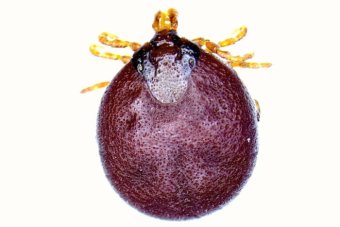
A national group of researchers is working towards identifying the possible tick species — and the subsequent bacteria — that may be responsible for causing Lyme-like symptoms in Australians.
Through state-of-the-art molecular testing techniques developed by the project’s lead group, at Murdoch University’s Vector and Water-Borne Pathogen Research Group (VWBPRG), five never before seen species of bacteria have been uncovered.
“We haven’t identified the bacterium which causes Lyme-like disease overseas but what we have found is a bacteria that is a Borrelia, but distantly related to the Lyme Borrelia burgdorferi,” Dr Charlotte Oskam of the VWBPRG said.
“We’ve only found it in echidna ticks, and at the moment we know that these ticks only bite echidnas so whether this bacterium can cause disease is unknown at this stage.
“We’ve got a number of questions with the bacteria we’ve identified: can it be transmitted by Australian ticks, does it cause disease, and is it contributing to the locally acquired tick-borne illness that we see in Australia.”
The debate surrounding Lyme or a ‘Lyme-like’ disease in Australia is a controversial and often emotional one, with a Senate inquiry underway.
Dr Oskam said the team was bringing science to the debate.
“Our research is driven by the fact that people can become unwell in Australia when they’re bitten by ticks,” Dr Oskam said.
“But we really need to put the science behind it and find out exactly what’s in the Australian ticks that can be transmitted and cause illness.
“We’re looking for any potential microbial organism that could cause disease, including bacteria but also viruses and other blood-borne pathogens.”
Research aimed at improving testing

Lyme disease, also known as Lyme Borreliosis, is a bacterial infection which causes symptoms such as fatigue, muscle pain and various neurological problems.
It is caused by a bacteria — Borrelia burgdorferi sensu lato — and passed onto humans by ticks.
The disease is recognised in America and other parts of Europe and Asia, where species of the Borrelia burgdorferi have been identified and recorded.
But the disease and the bacterium which causes it are not recognised in Australia.
With 70 species of ticks in Australia, and 65 of those native to the country, Dr Oskam said there was still a lot of work ahead of them.
“We have no idea what else is in Australian ticks, we’ve only looked at a handful of different tick species using this method,” she said.
The team at the VWBPRG, along with their research partners from the universities of Sydney and Queensland, have recently been awarded a three-year grant supported by the Australian Research Council.
Dr Oskam said that would allow for their research to be taken to the next level.
“The idea of this grant is to further explore the significance of these new bacterial species and also to compare how the bacteria that was found in Australian ticks is actually related to the bacteria found in ticks overseas that actually do cause disease,” she said.
“Because at the moment we really don’t know what role these microbes have.
“So we’re trying to provide the science that is required to improve potential diagnostic tests in Australia, potential treatment protocols and hopefully we might be able to provide some science towards controlling tick-borne disease in Australia.
